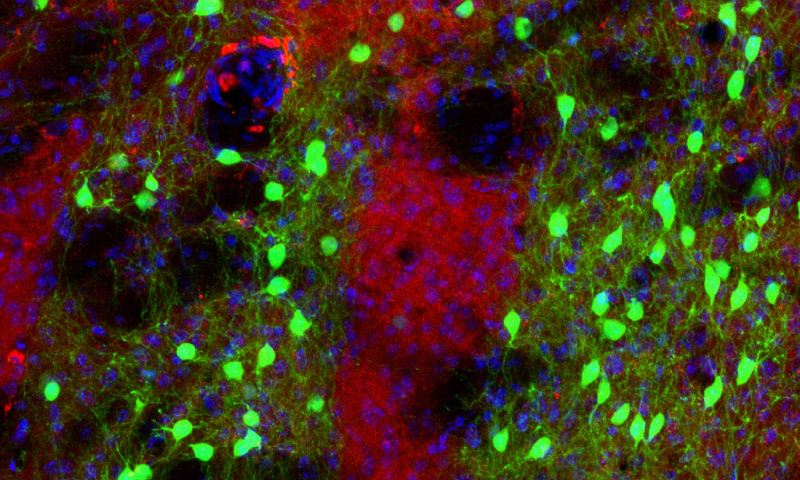Complexity of Brain Area, Huntington’s Further Revealed in Salk Study
Written by |

Credit: Salk Institute
A new study by researchers at the Salk Institute, in California, sheds light on how a major movement center of the brain called the striatum might work. The striatum is involved in several nervous system diseases including Huntington’s disease where neurons in the region progressively degenerate, leading to severe motor and cognitive problems and eventual paralysis.
The study report titled “Genetic-Based Dissection Unveils the Inputs and Outputs of Striatal Patch and Matrix Compartments,“ was published in the journal Neuron.
Scientific opinion has long-held that the striatum consists of patch cells that control cognition and the matrix cells that regulate sensation and movement. Using cutting-edge technology that included genetic engineering to tag the patch versus matrix neurons and tracing methods to track neural connections, the researchers discredited the hypothesis.
Evidence now indicates that patch and matrix neurons process both types of information, with the patch cells receiving a bit more information regarding emotion. A third method called electrophysiology helped scientists to confirm and understand the strength of neural connections between the patch and matrix cells to other important brain regions.
First author Jared Smith elaborated on their findings, in a press release: “Much of the previous work on patch and matrix cells inferred their functions based on connectivity with the rest of the brain, but most of those hypotheses were incorrect. With a more precise map of the input and output of patch and matrix cells, we can now make more informed hypotheses.”
Better explanations about the function of patch and matrix cells and their connections to other parts of the brain could help researchers understand symptoms of diseases like Huntington’s. Huntington’s has long been considered a movement disorder but cognitive and emotional problems are present as well. Knowing how the degeneration of the striatum affects multiple functions might help scientists find therapies to target the various symptoms of Huntington’s.
The study’s senior investigator Xin Jin, an assistant professor in the Molecular Neurobiology Laboratory at the Salk Institute said: “The most exciting result from this research is that we now have a new avenue to study long-standing questions about how the striatum controls movement in both healthy and diseased brains.”





